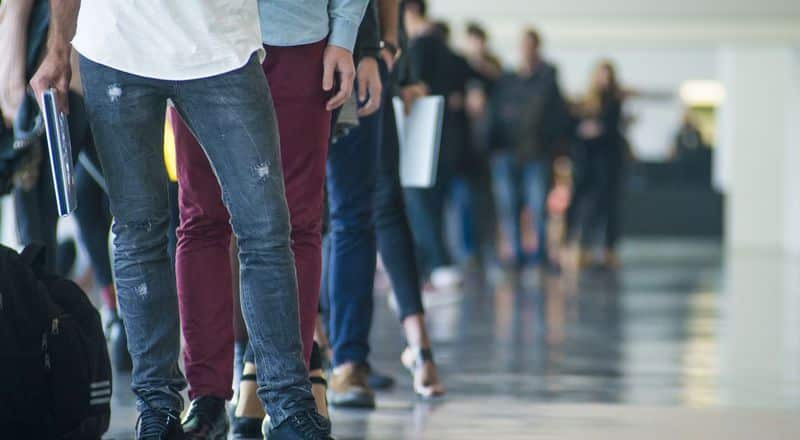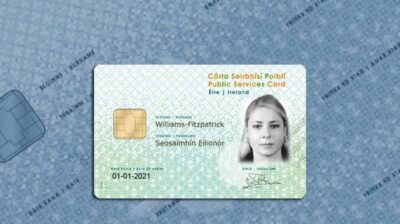Jobseeker’s Allowance and Jobseeker’s Benefit
If you are unemployed, you might be entitled to Jobseeker’s Allowance or Jobseeker’s Benefit

If you are unemployed in Ireland, you could be entitled to receive money from the government to help you to support yourself while you look for work.
In this article:
- What is the difference between Jobseeker’s Benefit and Jobseeker’s Allowance?
- Am I entitled to a jobseeker’s payment?
- How much is Jobseeker’s Allowance and Jobseeker’s Benefit?
- How do I apply for Jobseeker’s Allowance and Jobseeker’s Benefit?
- What other social welfare supports am I entitled to?
What is the difference between Jobseeker’s Benefit and Jobseeker’s Allowance?
While both Jobseeker’s Benefit and Jobseeker’s Allowance are for unemployed people who are looking for work, there is a difference between the two.
What is Jobseeker’s Benefit?
Jobseeker’s Benefit is a weekly payment that you can receive if you are unemployed and looking for work. To get Jobseeker’s Benefit you must have worked and paid a certain amount of Pay Related Social Insurance (PRSI) contributions. PRSI is a form of tax you pay every month when you are working. PRSI contributions go to the Social Insurance Fund (SIF) which helps to pay for social welfare benefits and pensions. Contributing money to the fund will allow you to receive these benefits. If you have not paid enough PRSI, you will not be eligible for Jobseeker’s Benefit.
What is Jobseeker’s Allowance?
If you have not paid enough PRSI, you can apply for Jobseeker’s Allowance. To be eligible, you will need to meet the conditions of a means test. The means test will calculate your income from work, savings and other sources. If you are living with a partner or in your family home, some of their income might be taken into account too. If it falls below a certain cut-off point you will be entitled to Jobseeker’s Allowance. Find out more about what is assessed in the means test for Jobseeker’s Allowance.
Am I entitled to a jobseeker’s payment?
You may be eligible to receive a jobseeker’s payment if any of the following apply to you:
- You lost your job
- You have been made redundant
- You have had your work hours reduced
- You work on a part-time or casual basis
- You are self-employed and the amount of work you are receiving has reduced
If you voluntarily leave your job, you may still be entitled to benefits. However, you have to wait nine weeks before applying for these payments.
What conditions must I meet to get a jobseeker’s payment?
To qualify for a jobseeker’s payment, you must be:
- Unemployed for at least 4 days out of 7
- Aged 18 or over
- Capable of work
- Available for work
- Genuinely seeking work
- In the case of Jobseeker’s Benefit, have enough PRSI contributions
- In the case of Jobseeker’s Allowance, you must satisfy a means test
When you apply for one of these payments, you will be asked to agree to certain conditions. If you break any of these, you could be put on penalty rates until you meet the conditions again. Find out more about jobseeker’s payments and penalty rates.
Can I get a jobseeker’s payment if I work part-time?
You may still be entitled to a payment if you work part-time. If you are unemployed for at least four days out of seven, then you could be entitled to a payment.
However, if you work very long shifts with your hours adding up to 36 hours per week over three days, then you might be treated as being in full-time employment. This might also be the case for people working up to 30 hours per week. Your Intreo officer will assess whether or not you are considered to be in full-time employment.
Read more about jobseeker’s payments and work:
- Jobseeker’s Benefit and Work
- Jobseeker’s Allowance and Work
- Jobseeker’s Allowance and Self Employment
How much is Jobseeker’s Allowance and Jobseeker’s Benefit?
The amount of Jobseeker’s Allowance and Jobseeker’s Benefit that you receive will depend on certain factors.
What is the Jobseeker’s Allowance rate?
The maximum personal rates of Jobseeker’s Allowance are:
- Aged 25 and over: €244
- Aged 18-24 and living independently: €244
- Aged 18-24 and not living independently: €153.70
There will be an increase of €10 in maximum personal weekly rate of Jobseeker’s Benefit and Jobseeker’s Allowance payments from January 2026, as announced in Budget 2026.
What is the Jobseeker’s Benefit rate?
Your rate of Jobseeker’s Benefit depends on your average weekly earnings in the relevant tax year, which is two years before your claim. If you are claiming Jobseeker’s Benefit in 2025, the relevant tax year is 2023. Click here to read more about average weekly earnings.
- For average weekly earnings of less than €150, your personal rate is €109.50
- For average weekly earnings of €150 – €219.99, your personal rate is €157.30
- For average weekly earnings of €220 – €299.99, your personal rate is €191.10
- For average weekly earnings of €300 or more, your personal rate is €244
There are increases to these rates for ‘qualified adults’ and a ‘qualified child’. This means if you are supporting an adult (such as a spouse or civil partner) or child, you will receive an increase. Find out more about the rate increases for Jobseeker’s Allowance and the rate increases for Jobseeker’s Benefit.
How do I apply for Jobseeker’s Allowance or Jobseeker’s Benefit?
It is important to apply for your jobseeker’s payment as soon as you become unemployed. You will not be paid for the first three days of your claim, so it’s important to apply on your first day of unemployment.
Applying for jobseeker’s payments online
The quickest and easiest way to apply for your jobseeker’s payment is by applying online through MyWelfare.ie.
You will first need to create a MyGovID account. To do this, you need an email address. Once you have a MyGovID account, you can make your application.
Applying for jobseeker’s payments by post
To apply for both Jobseeker’s Allowance or Benefit for the first time, you must fill out a (UP 1) form. You can get an application form by emailing [email protected].
If it has been less than two years since you last claimed Jobseeker’s Benefit, you must fill out this form (UP 6) instead.
The relevant form should then be posted or brought to your local Intreo Centre, along with any other supporting documents you have been asked to provide.
You can get help with filling in your application form at your local Intreo Centre, social welfare office or Citizens Information Centre.
When will I receive my jobseeker’s payment?
You will receive your jobseeker’s payment weekly and can collect it from your nearest Post Office. You will need to bring valid identification with you such as a Public Services Card, Driving licence, Passport, Irish Residence Permit card or National Identity Card
While you are waiting to receive your first payment, you may qualify for Supplementary Welfare Allowance. Find out more about Supplementary Welfare Allowance.
What other social welfare supports am I entitled to while getting a jobseeker’s payment?
If you are receiving a jobseeker’s payment you may be entitled to other benefits such as a medical card, mortgage interest payments or rent relief. You can find out more about your entitlements at your local Intreo Centre, social welfare office or Citizens Information Centre.
Need more information?
We are here to answer your questions and talk through your options. Our online chat service is for 16 to 25 year olds and is available Monday to Friday, 4pm to 8pm. Chat to us now about your situation.
- Chat now to a trained Youth Information Officer
- Or leave us a message and we will email you back






